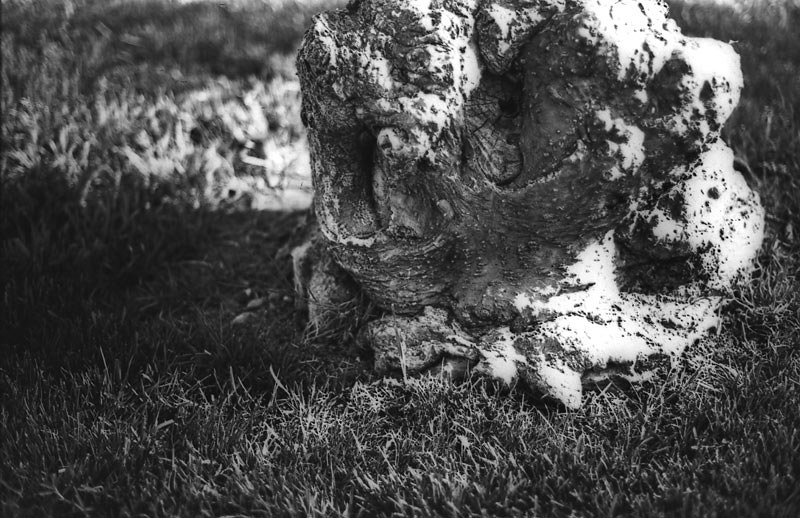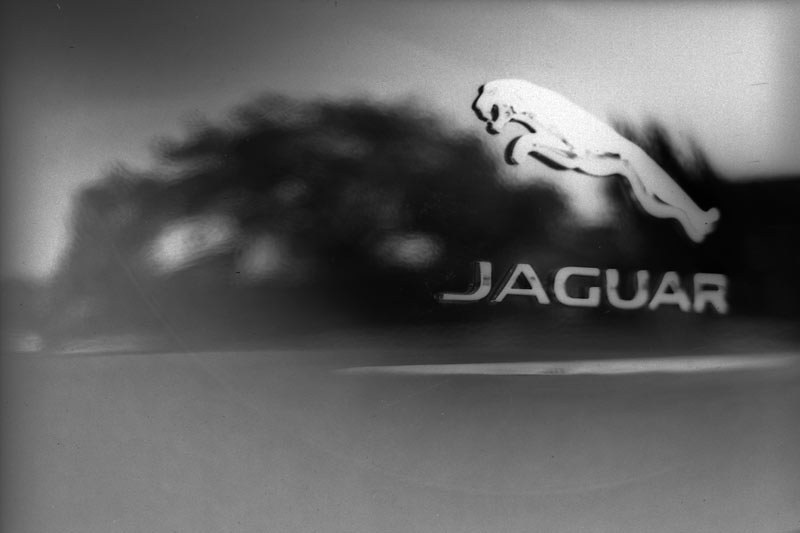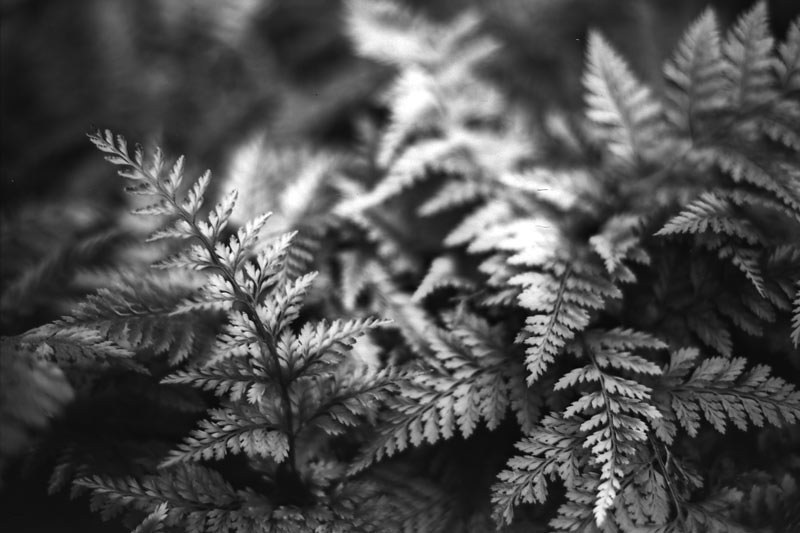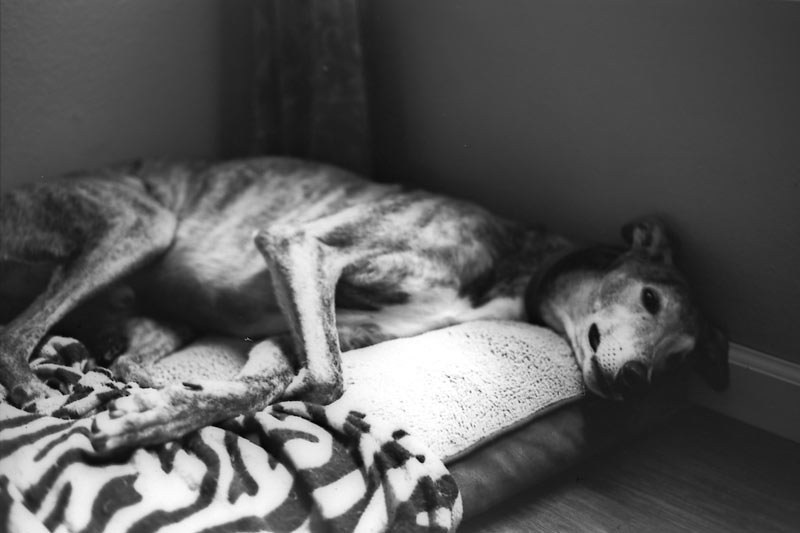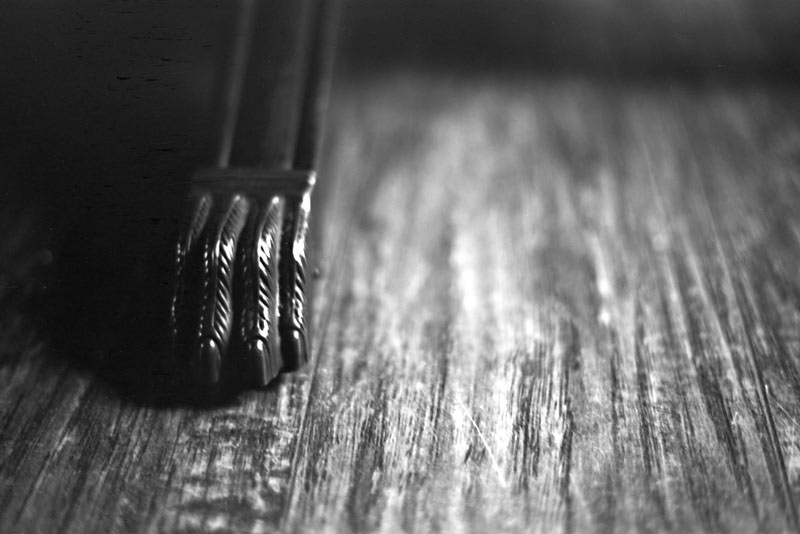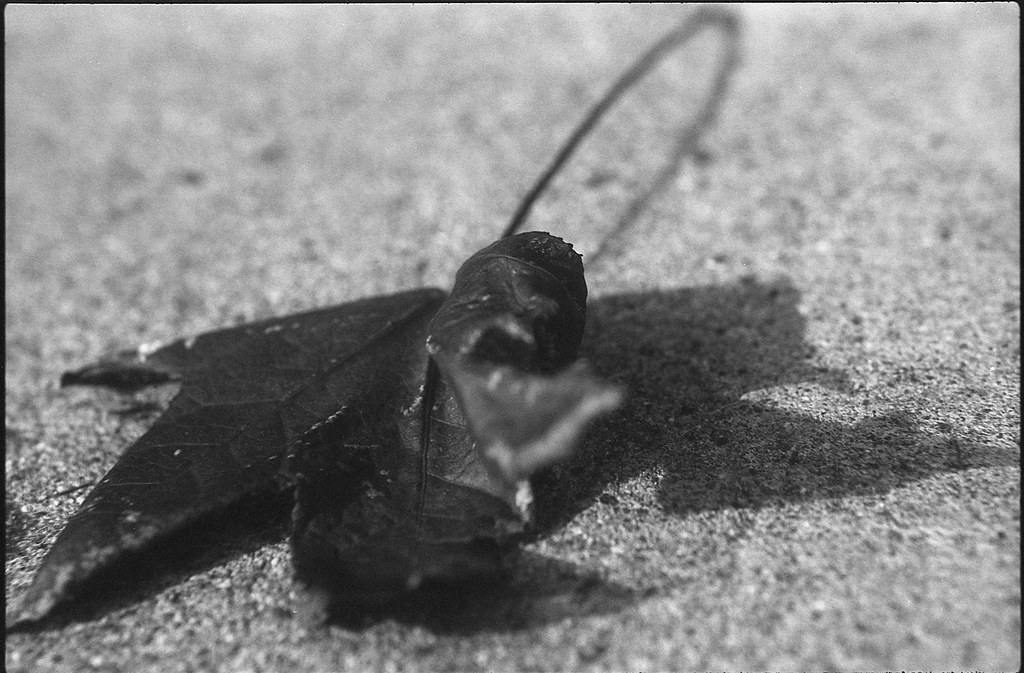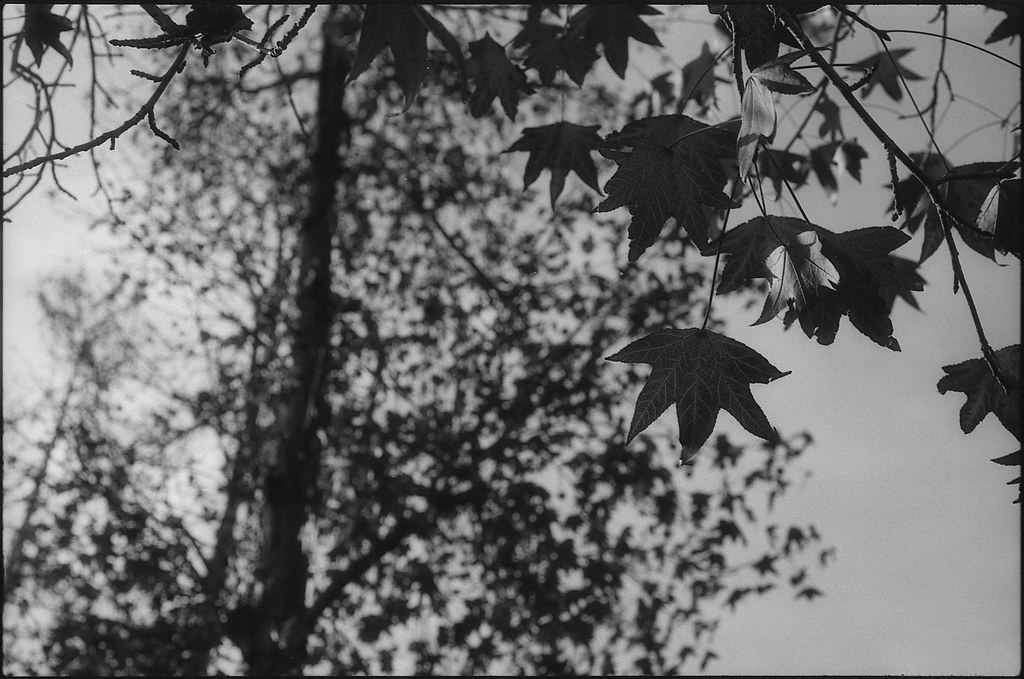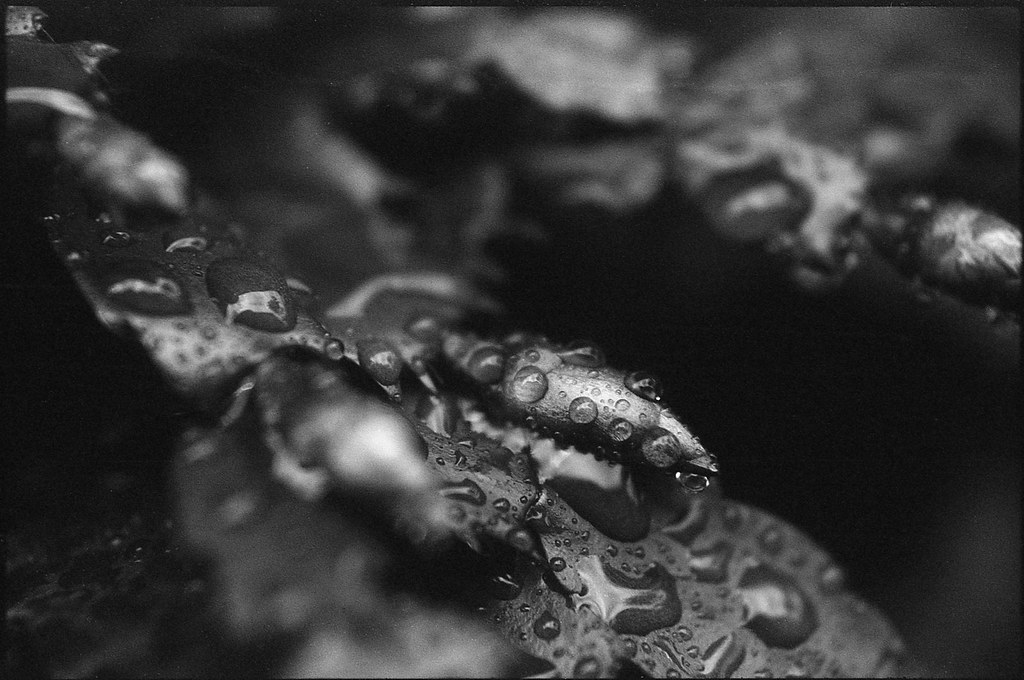I loaded one roll of about 24 exposures and put that aside. I figured if my peek had fogged anything it would be most evident on the 'outer' parts of the roll. So I loaded another roll of about 20 exposures and put it in my trusty Pentax K1000. This was just a test roll, but I still tried to make a little effort to get something I would like to look at. I have never shot a picture of a test chart and I'm not going to start now.
I had some Kodak X-Tol developer mixed up already, so I decided just to use that at 1:1 with dH2O. I cut the leader off and did a quick test to make sure the developer was still good and to check the fixing time. I dunked the leader in developer for 5 minutes and it looked pretty opaque. Then I fixed for 4 minutes and the undeveloped area cleared in about 2 minutes, but the developed area got a bit less dense too. So I decided on a 10 minute dev time and a 5 minute fix. I don't have enough of this film to worry about figuring out 'the right' times and concentration. I probably only have enough in the loader to make 2 more 24exp rolls, so this is just for fun and for the information of anyone who might find themselves in a situation where they have to decide whether to keep some old unknown film or toss it.
So without further ado, here are some of the results... The highlights (and some of the mid-lights) are blown in all of them, and there is indeed some fogging (probably from my peek) on some frames. In fact in some (not shown here) there are only blown highlights! I think I may have over-exposed using iso 10. Next roll I will try iso 20 and see what happens. It is high contrast film by design, so a full range of tones is not to be expected. But the mere fact that I got recognizable images from this poor tormented film is really a credit to the medium. This film went out of production in 2002. Digital formats that old are already obsolete! So I'm going to enjoy my last few feet of this good found film and treat it with the respect it deserves. Thank you Kodak for making products to last decades, indeed centuries!!
